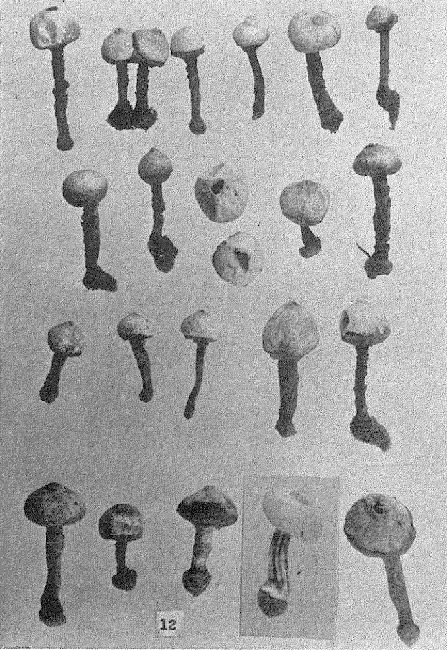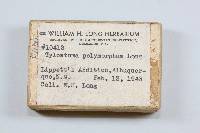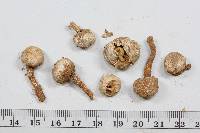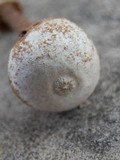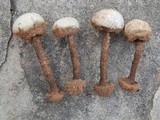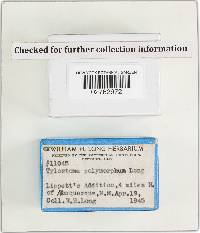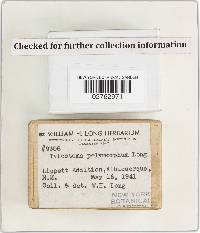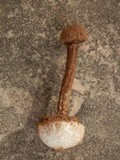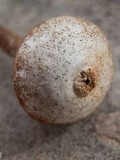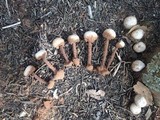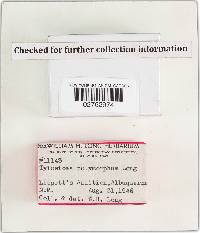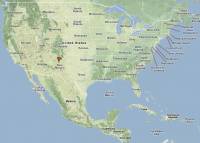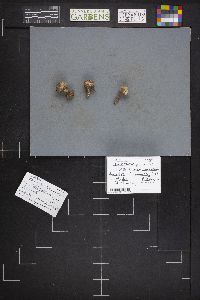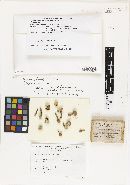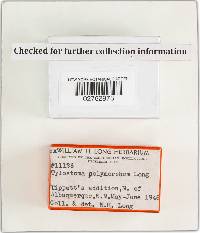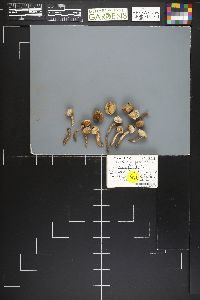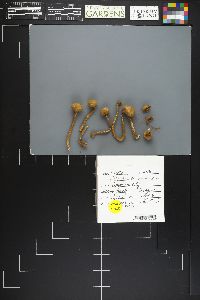
|
|
|
|
Family: Agaricaceae
|
Wright J.E. 1987. Bibliotheca Mycologia 113: 174. Tulostoma polymorphum Long. (Fig. 116; Pls.XXIII:6; XLIII:2) - Lloydia 10: 129-131, fig. 12. 1947. Etym.: The name refers to the varied shape of the fungus. Spore-sac up to 15 mm. Exoperidium hyphal, formed by threads inter-mixed with sand grains, in some specimens forming a thick, subpersistent crust, covered by clay. Endoperidium almost chalky white to cinereous, subsmooth, fragile. Mouth fimbriate, in some specimens plane, in others mammose, but generally denticulate; in all cases granulose. Socket inconspicuous, more or less separated from the stem (in some specimens ocluded by clay), membrane lacerate to squamose, denticulate. Gleba ferrugineous. Stem up to 35 x 4 mm, brown, rugose-squamose, decorticÀ£ting and leaving as woodcolouredsurface, also rugose. Endoperidium formed by threads similar to those of capillitium, with numerous septa that are also more swollen. Spores globose to elliptic, verrucose to asperulate under L.M., coloured, vacuolate, some apiculate, 4.5-6 µm diam; under SEM the ornamentation appears as conspicuous, crowded to sparse,sliqhtly anastomosed (or only at the base) verrucae. Capillitium hyaline, slightly branched, sparsely septate; threads thick-walled, lumen scant to solid, not swollen at the uncoloured septa, disjointable, 1.8-6.6 µm diam. Habitat: sandy soil. Distribution: North America: SW United States. Holotype: United States, New Mexico, S of Lippetts Addition, Albuquerque, leg. W. H. Long (Herb. Long no 11.055, BPI!). Illustration: Long (op. cit.). Remarks: The features of this species are so similar to those of T. fimbriatum var. campestre that it is highly probable that they may be synonyms. |
|
|
|

